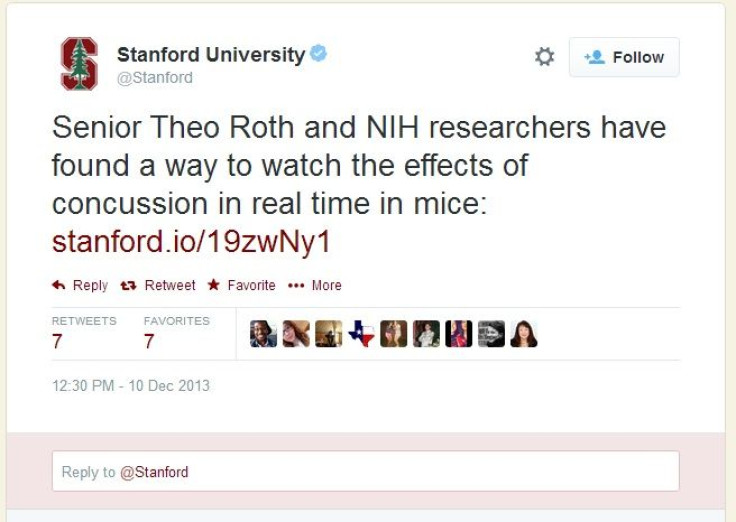A Happy TBI Accident: Researchers Observe Mice With Concussions To Explore Antioxidant Treatment

A supposedly bumbling young scientist at the National Institutes of Health has been credited with developing a technique to study mild brain injury in an animal model — in experiments initially intended to study meningitis.
Like “Little Bunny Foo Foo” of the eponymous children’s poem, researchers there were preparing laboratory mice for study by scooping them up and bopping them on the head! Chosen from an applicant pool of some 10,000 students, researcher Theo Roth proved himself somewhat clumsy while helping to prepare the mouse model, a process that involved shaving a small portion of the skull for the purpose of shining a laser into brain tissue to record neurological activity.
“He was really bad at performing skull-thinning surgery,” study leader Dorian McGavern told The MMQB. “Just couldn’t get the hang of it.”

Yet after concussing so many mice, the researchers observed heightened activity in the mouse brain as blood vessels lining the skull leaked into the gray matter to cause damage. By the end of the project, the two had achieved their eureka moment. “We saw the brain operating in ways no one had ever recorded before, and right around the same time traumatic brain injury was becoming a hot topic,” Roth said. “People were starting to realize how detrimental it was in NFL and for guys coming back from Iraq and Afghanistan.”
Roth refined his technique by speeding it up. Without wasting time, Roth used a small cutting device to saw through the skull in about 45 seconds, shaving the bone to the width of a single human hair. He then used a four-foot tall, two-photon microscope to record images of mild brain injury, describing the process. After sustaining a blow to the head, blood vessels damaged by the force of the skull break and leak into the brain — only to be aided by a “reactive oxygen species (ROS),” which mistake the mild brain injury for a foreign intrusion.Though helpful in fighting deadly bacteria, the ROS molecules cause further damage to the glial limitans, a thin membrane separating the brain’s gray matter from the fluids coursing around the circumference of the inner skull.
This process may be responsible for the development of chronic traumatic encephalopathy, a disease often found in the autopsied brains of former American football players, McGavern says. The discovery of that particular disease, in addition to heightened attention to concussive injuries in the NFL, led to the $765 million payout last year to a number of former players who sued the League.
Aside from future implications for the game of football, medical researchers from the U.S. military say brain health represents a “new frontier” for science, with exciting breakthroughs predicted for the years ahead. Earlier this month, Army Surgeon General Patricia D. Horoho told a meeting of government scientists that a healthy, well-rested brain might be key to future success in warfare.
“At war, that equates to a combat advantage,” Horoho said in a press release. “In life, that equates to a better you. It equates to a better family, and it equates to a better community.”
Americans last year suffered 2.5 million traumatic brain injuries, according to the Centers for Disease Control and Prevention.



























